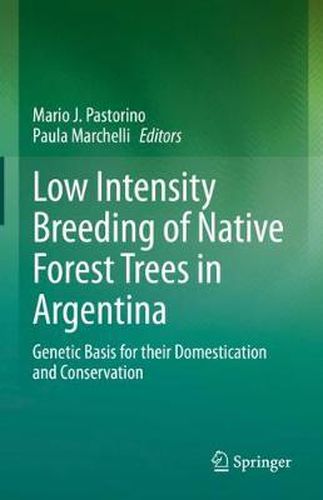Readings Newsletter
Become a Readings Member to make your shopping experience even easier.
Sign in or sign up for free!
You’re not far away from qualifying for FREE standard shipping within Australia
You’ve qualified for FREE standard shipping within Australia
The cart is loading…






This title is printed to order. This book may have been self-published. If so, we cannot guarantee the quality of the content. In the main most books will have gone through the editing process however some may not. We therefore suggest that you be aware of this before ordering this book. If in doubt check either the author or publisher’s details as we are unable to accept any returns unless they are faulty. Please contact us if you have any questions.
Global climate change requires the development of programs that consider the active restoration of degraded forests and the use of native trees in afforestation to preserve the natural environment. International commitments like the UN REDD program, the Montreal Process and the Convention on Biological Diversity call for the breeding of species rarely contemplated by large industrial companies. Low-intensity breeding is the most rational strategy for those species: simple but robust, and not dependent on continuously increasing funding, and therefore effective even with a relatively small budget. It commonly focuses on high genetic diversity rather than improving economic traits and adaptability rather than productivity. Controlled crosses with full pedigrees typical of high-intensity breeding are replaced by open pollination.
This book presents state-of-the-art breeding strategies from the last two decades for several forest tree species of prime importance in the natural forests of Argentina. They are distributed in the three main forestry ecoregions of the country: the subtropical dry forest (Chaco), the subtropical rain forests (Yungas and Alto Parana rainforests) and the temperate forests of Patagonia. The book also discusses the genetic patterns of the selected species defined using genetic markers together with the analysis of the variation in quantitative traits. Further, it examines the crucial features of their reproductive biology, such as the mating system and gene flow and describes the current breeding programs. Lastly, it presents the latest developments in genetic resources and their emerging applications, concluding with some reflections and perspectives related to the conditioning imposed by climate change.
$9.00 standard shipping within Australia
FREE standard shipping within Australia for orders over $100.00
Express & International shipping calculated at checkout
This title is printed to order. This book may have been self-published. If so, we cannot guarantee the quality of the content. In the main most books will have gone through the editing process however some may not. We therefore suggest that you be aware of this before ordering this book. If in doubt check either the author or publisher’s details as we are unable to accept any returns unless they are faulty. Please contact us if you have any questions.
Global climate change requires the development of programs that consider the active restoration of degraded forests and the use of native trees in afforestation to preserve the natural environment. International commitments like the UN REDD program, the Montreal Process and the Convention on Biological Diversity call for the breeding of species rarely contemplated by large industrial companies. Low-intensity breeding is the most rational strategy for those species: simple but robust, and not dependent on continuously increasing funding, and therefore effective even with a relatively small budget. It commonly focuses on high genetic diversity rather than improving economic traits and adaptability rather than productivity. Controlled crosses with full pedigrees typical of high-intensity breeding are replaced by open pollination.
This book presents state-of-the-art breeding strategies from the last two decades for several forest tree species of prime importance in the natural forests of Argentina. They are distributed in the three main forestry ecoregions of the country: the subtropical dry forest (Chaco), the subtropical rain forests (Yungas and Alto Parana rainforests) and the temperate forests of Patagonia. The book also discusses the genetic patterns of the selected species defined using genetic markers together with the analysis of the variation in quantitative traits. Further, it examines the crucial features of their reproductive biology, such as the mating system and gene flow and describes the current breeding programs. Lastly, it presents the latest developments in genetic resources and their emerging applications, concluding with some reflections and perspectives related to the conditioning imposed by climate change.